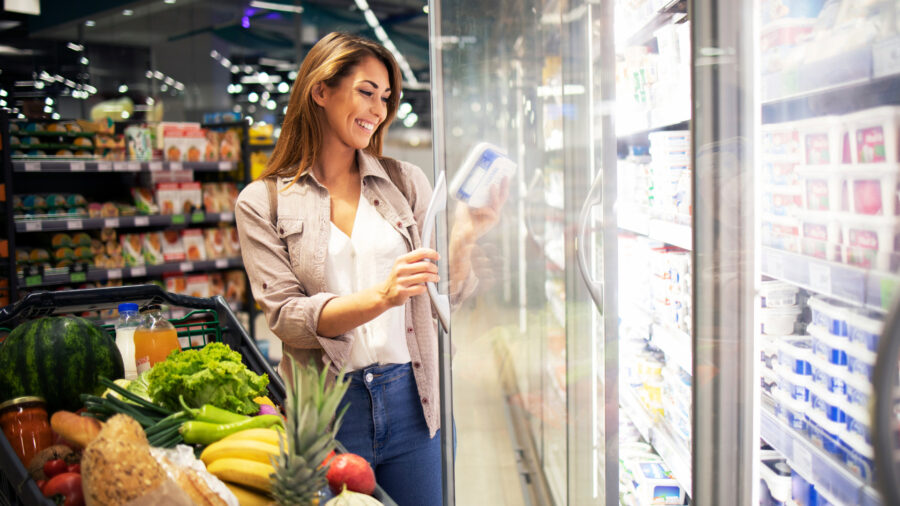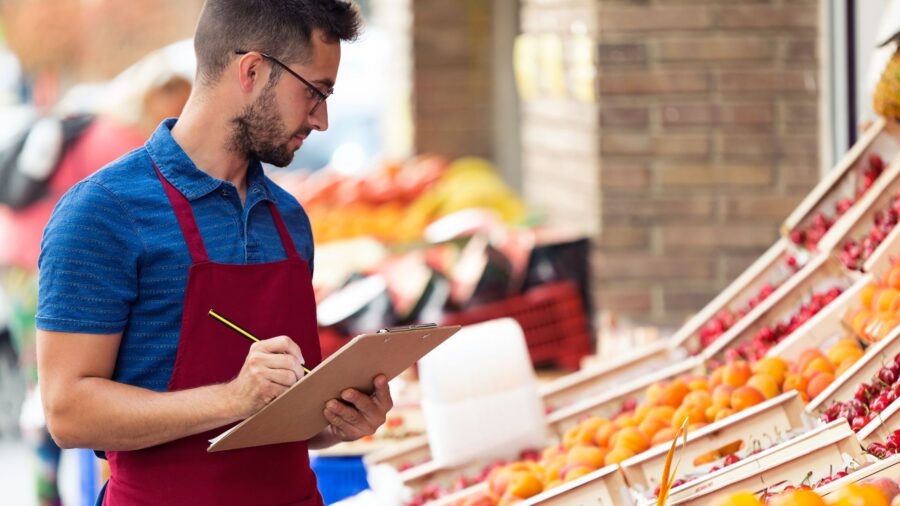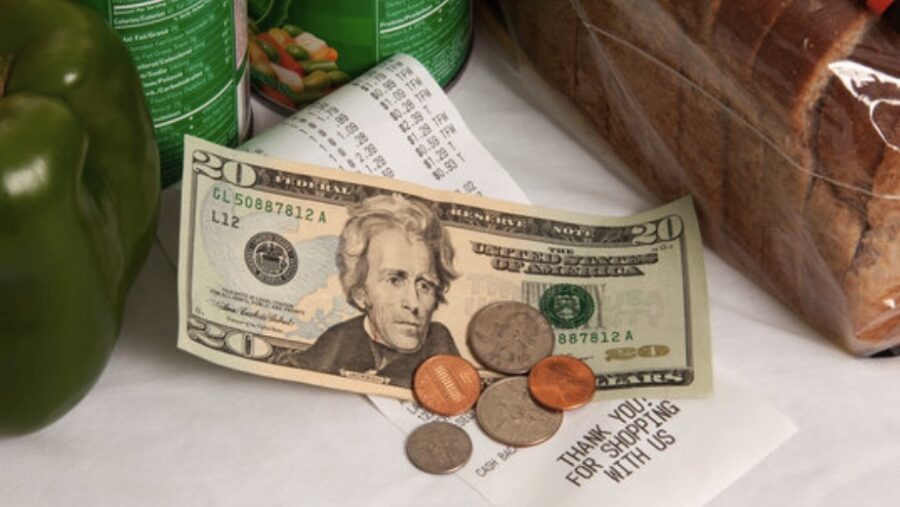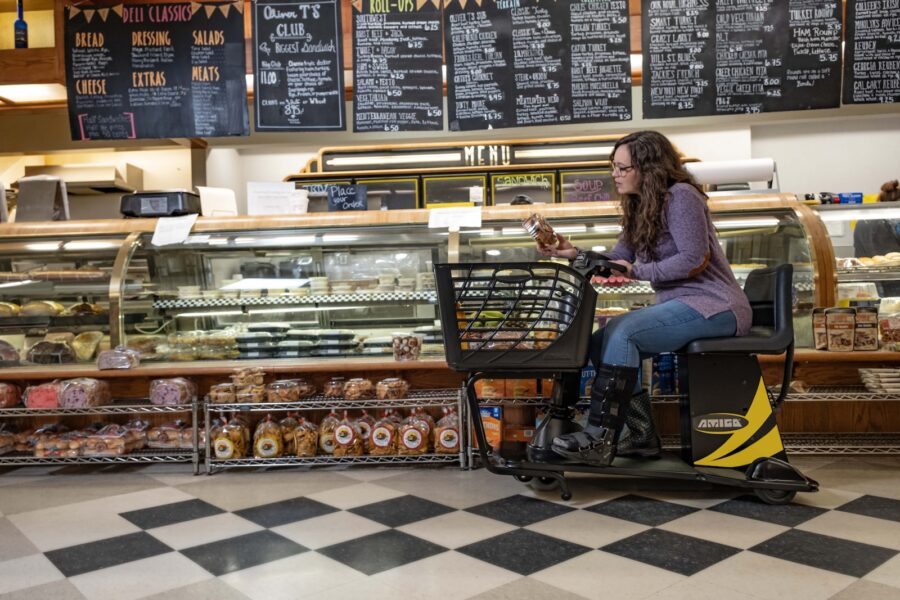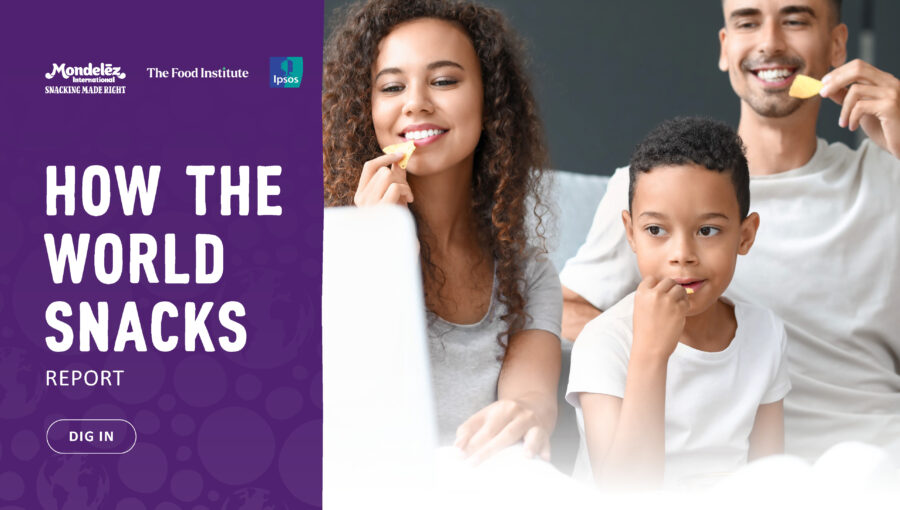Despite inflation, impulse purchases remain a key opportunity for maximizing basket sizes. A study by Ipsos found that while 56% of consumers say they’re making fewer impulse buys, one-third still made one in the past week. Whether grocers are offering a great deal or a pleasant treat, tapping into impulse purchases remains a valuable strategy — grocers just need to rethink how they encourage these purchases.
“What’s been inserted into the conversation, particularly in the food and beverage space now, is more thoughtfulness and mindfulness,” said Sarah Lehman, Vice President, Client Success at Ipsos. “So it’s kind of at war with what we would usually be susceptible to as far as stimulus like ‘oh, this is just here where I happen to be shopping’ or this is at the point of sale or this is something that’s new and shiny. Now for brands to really capitalize on impulse purchasing behaviors they have to be much more intentional because of this inflation sensitivity.”
Overall, 61% of shoppers usually plan purchases ahead of time but sometimes buy things on impulse, according to data from Acosta. Price-minded shoppers are more likely to stick to their lists, but the data shows that opportunities are still available. More work than that is needed, however, to actually turn interest into unplanned purchases.
“Acosta Group’s research shows significantly more shoppers are sticking to lists and using up the food in their pantries before buying more so it’s harder than ever to drive traditional levels of in-store impulse purchases,” said Julie Oxner, SVP Business Intelligence at Acosta Group. “Some strategies to help create a sense of urgency and entice customers to make impulse purchases during a recession are providing limited-time discounts, buy-one-get-one-free offers, or bundled deals while ensuring low-cost items are placed near high-demand products or at the checkout counter.
“Shoppers are looking for deals now more than ever and these tactics can help coax shoppers to make the purchase.”
Properly utilizing the store layout can play a role in generating this urgency. Sam Smith, Director of SmithPackaging, noted that maintaining a clear walking path encourages shoppers to look at all items, creating more opportunities to drive impulse buys. Additionally, eye-catching signage can draw shoppers’ eyes towards items that are more likely to inspire a purchase.
There are also opportunities to further encourage impulse buys at their most common location: checkout. Adam Schwartz of CouponSurfer suggested that offering free samples near checkout can ease the boredom of long waits, and throwing in an associated deal can drive more purchases. Grocers shouldn’t forget to include impulse options at their self-checkout kiosks either.
“Run minimum-order promotions at self-checkout,” said Schwartz. “Similar to what e-commerce does with spend $10 more to get free shipping, grocers can do the same, but instead of free shipping they can get special savings on impulse related buys. These can be a general promotion for a specific dollar amount or – better yet – tied to the average spend of an individual’s loyalty card.”
Grocers should also still target items in the snack category for impulse buying. These items are inexpensive and naturally fit in at checkout. Melissa Myres, Director, 84.51° Insights, shared some statistics about what encourages shoppers to check out a new snack:
- 59% say it is because the item was on sale
- 58% say that the flavor/texture looks appealing
- 51% because they have a coupon.
“Knowing this, you can boost impulsivity via trial of new snack items via promotion and ensure there is a visual of the actual item shown,” said Myres.
The Food Institute Podcast
The reasons people eat a specific product can vary even in a single day. That begs the question – what are consumers looking for in their food products throughout a day, a week, and a year? Kerry’s Soumya Nair and Shannon Coco joined The Food Institute Podcast to share Kerry’s research on the fluid dynamics of consumer eating.


